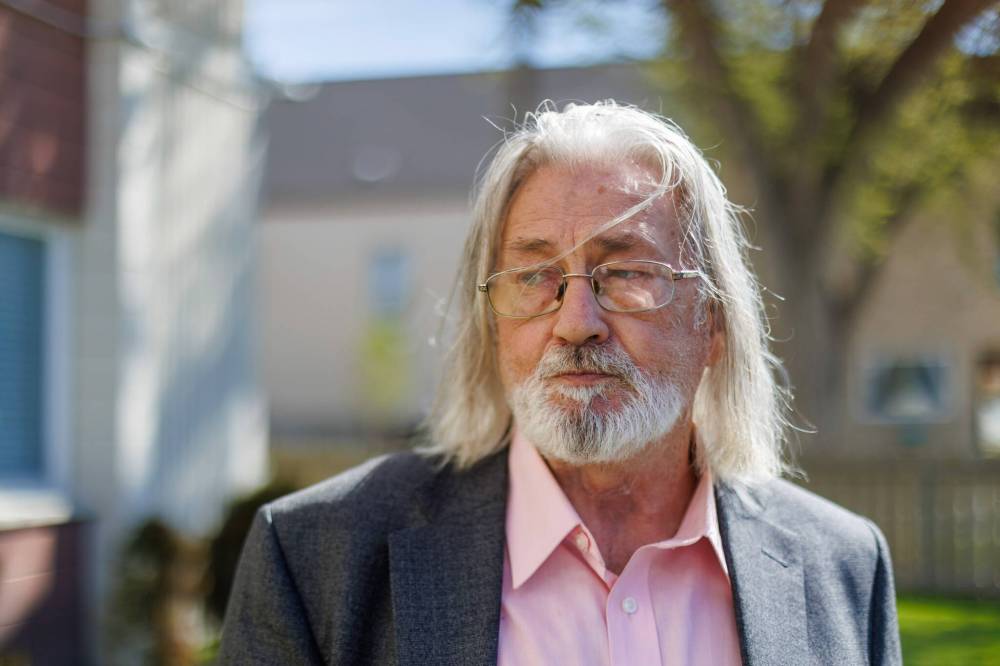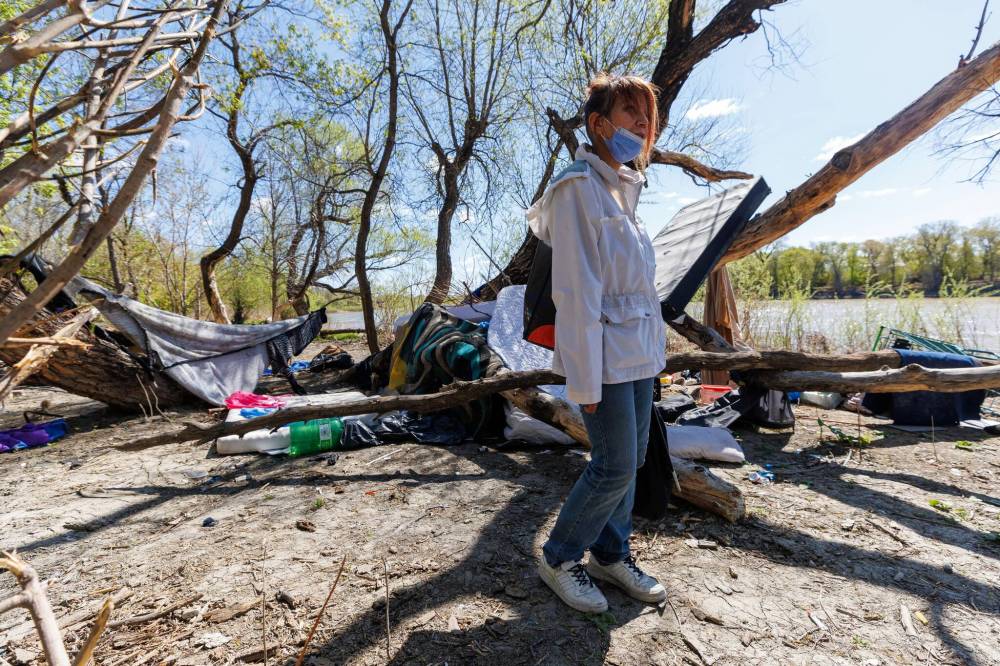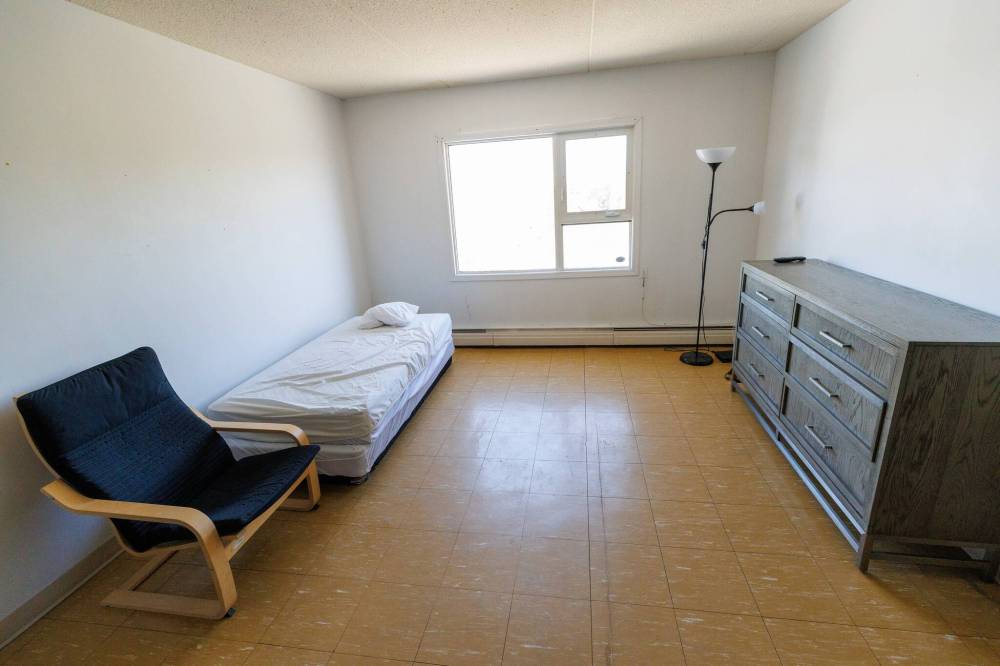Dozens moved from encampments into housing Province announces $6.4M for 67 units — some already in use — as part of homeless plan
Read this article for free:
or
Already have an account? Log in here »
To continue reading, please subscribe:
Monthly Digital Subscription
$0 for the first 4 weeks*
- Enjoy unlimited reading on winnipegfreepress.com
- Read the E-Edition, our digital replica newspaper
- Access News Break, our award-winning app
- Play interactive puzzles
*No charge for 4 weeks then price increases to the regular rate of $19.00 plus GST every four weeks. Offer available to new and qualified returning subscribers only. Cancel any time.
Monthly Digital Subscription
$4.75/week*
- Enjoy unlimited reading on winnipegfreepress.com
- Read the E-Edition, our digital replica newspaper
- Access News Break, our award-winning app
- Play interactive puzzles
*Billed as $19 plus GST every four weeks. Cancel any time.
To continue reading, please subscribe:
Add Free Press access to your Brandon Sun subscription for only an additional
$1 for the first 4 weeks*
*Your next subscription payment will increase by $1.00 and you will be charged $16.99 plus GST for four weeks. After four weeks, your payment will increase to $23.99 plus GST every four weeks.
Read unlimited articles for free today:
or
Already have an account? Log in here »
Hey there, time traveller!
This article was published 09/05/2025 (223 days ago), so information in it may no longer be current.
Manitobans have begun settling into 67 new social housing units announced Friday as part of the provincial government’s homelessness strategy.
The Manitoba government is spending $6.4 million on the units, which were established in collaboration with Main Street Project, Siloam Mission and Sunshine House, as part of the Your Way Home plan, Premier Wab Kinew’s strategy to end chronic homelessness within two terms.
The units — some of which are ready now, others will be move-in ready over the next few months — are an effort to provide as much housing as possible as the weather warms and encampments become more prevalent around the city, said Housing, Addictions and Homelessness Minister Bernadette Smith.
MIKE DEAL / FREE PRESS Housing, Addictions and Homelessness Minister Bernadette Smith said the units are an effort to provide as much housing as possible as the weather warms.
“We know that encampments pop up every year around this time. This is nothing new,” Smith said Friday morning.
“There’s always lots of new encampments that pop up. This is why we’re ramping up housing, we’re trying to get as much housing online as possible, to get as many people into housing as possible. We know that there’s a great need.”
The units are spread across three buildings, whose locations are not being made public to keep people safe, a provincial spokesperson said.
People using substances will be able to use while living in the units and will be offered on-site supports, including case managers and support workers.
The funding includes supportive housing through Sunshine House for homeless LGBTTQ+ people. Those 14 units have already been filled with 16 people previously living in encampments, said Levi Foy, Sunshine House’s executive director.
“Our housing team works with (residents) to allow them to envision and define what stability can look like for them,” Foy said. “This can include getting residents connected with culture, connected with mental health services as well as addiction and treatment services.”
MIKE DEAL / FREE PRESS Levi Foy, Sunshine House’s executive director, said 14 units have already been filled with 16 people previously living in encampments.

There have been 33 people moved from 17 encampments across the city into housing since the launch of the Your Way Home plan, with 28 being in the units announced Friday. None have returned to encampments, Smith said.
Al Wiebe, a longtime homelessness advocate, said he was skeptical about the province’s timeline to end chronic homelessness within eight years.
“It’s not going to happen in anybody’s lifetime, never mind anybody’s term … because for every person that you house off the street, 1.5 come back on,” he said.
Wiebe, who himself was previously homeless, said the plan did have merit in connecting Manitoba’s support systems and helping them work in sync.
He said one of his first jobs after finding housing was as a case manager, and it at times took seven or eight attempts to get a person into housing before they stayed.
“Everybody’s pulling together in same direction, and that’s a good thing. I worry about capacity to support them all. That’s my biggest concern, because people do not stay in housing without supports. It’s very hard,” he said.
MIKE DEAL / FREE PRESS Al Wiebe, a longtime homelessness advocate, said the plan has merit, but was skeptical about the province’s timeline to end chronic homelessness within eight years but 
Many of the tents that once lined Waterfront Drive along the river are gone, with the dirt under them worked up and garbage removed.
A few tents, and people, remain. One told the Free Press he was there when people were being offered housing and the city was cleaning the grounds, but he had been let down before and was skeptical of the offer.
“I don’t even bother anymore,” the man, who asked his name not be published, said.
He had been living further down Waterfront Drive in another encampment that he said hasn’t been cleared, but moved when he realized new space had opened up. He has been living on the streets in Winnipeg for about three years and works odd jobs to get by.
“It’s my choice to live out here, and it’s my choice to work,” he said.
A woman at the encampment said she had previously lived by the river and moved elsewhere during the winter. She returned to find the area cleared out.
MIKE DEAL / FREE PRESS Elizabeth ended up in Winnipeg when she was discharged after a hospital stay with nowhere to go about a year ago. 
Elizabeth, 26, said she’d gladly accept housing if it was offered to her, and would prefer it over shelter or street living.
“I’d feel safer in a home instead of in a building,” she said.
Originally from Garden Hill First Nation, she ended up in Winnipeg when she was discharged after a hospital stay with nowhere to go about a year ago. She’s working on getting sober and seeing her children again.
“Maybe I’ll apply for a house,” she said.
The provincial government estimates there are around 700 Manitobans living in encampments.
malak.abas@freepress.mb.ca
MIKE DEAL / FREE PRESS An apartment is almost ready for a client once the paint has dried.

Malak Abas is a city reporter at the Free Press. Born and raised in Winnipeg’s North End, she led the campus paper at the University of Manitoba before joining the Free Press in 2020. Read more about Malak.
Every piece of reporting Malak produces is reviewed by an editing team before it is posted online or published in print — part of the Free Press‘s tradition, since 1872, of producing reliable independent journalism. Read more about Free Press’s history and mandate, and learn how our newsroom operates.
Our newsroom depends on a growing audience of readers to power our journalism. If you are not a paid reader, please consider becoming a subscriber.
Our newsroom depends on its audience of readers to power our journalism. Thank you for your support.










